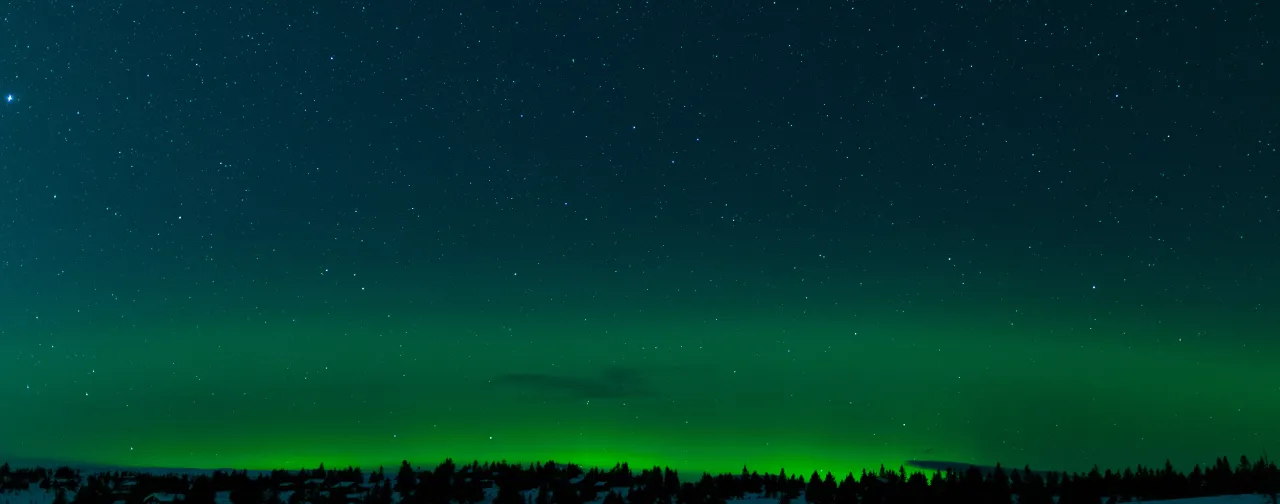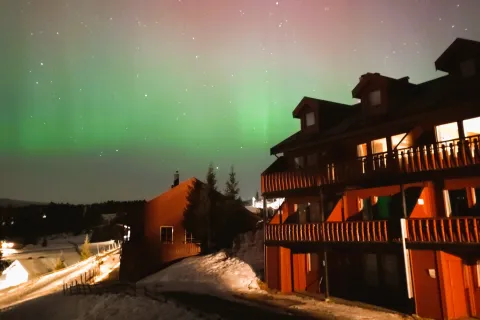"When the sky dances in green and purple over the mountain..."
Nordseter offers quiet, clear winter nights with minimal light pollution – perfect for chasing the Northern Lights. Even though we are located south of the classic aurora zone, sometimes the sky explodes in green and purple when the solar wind plays on the Earth's magnetic field. Since there is no open winter road at Nordseter, and the cabins inside the mountains do not have electricity, there is minimal light pollution and the conditions are right for seeing the aurora borealis In this article, you will get an easy-to-understand explanation of what the Northern Lights are - tips for when and how you have the best chance of seeing them - practical advice and activities you can combine with the Northern Lights experience and link to website where you can follow the KP-index and aurora conditions at Nordseter. The picture above shows the Northern Lights over Nevelvann at Nordseter - a great vantage point.


